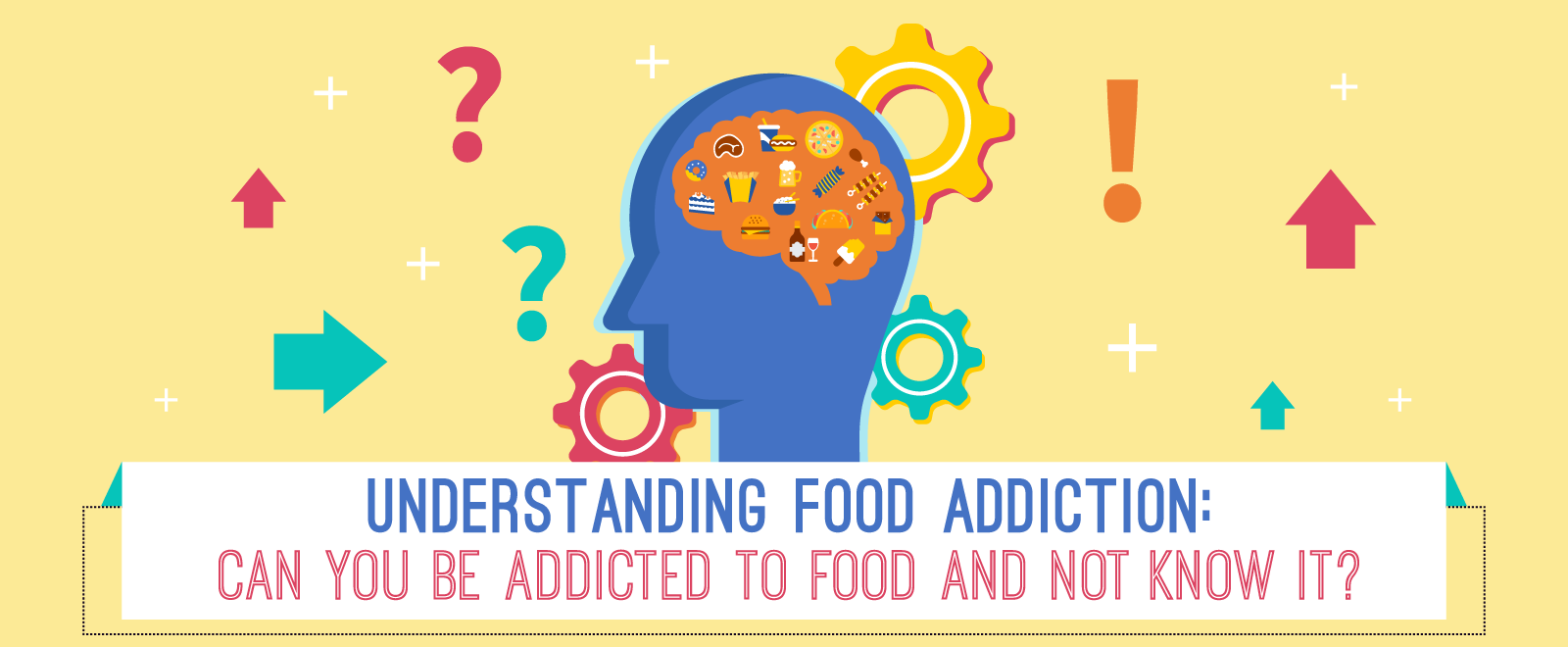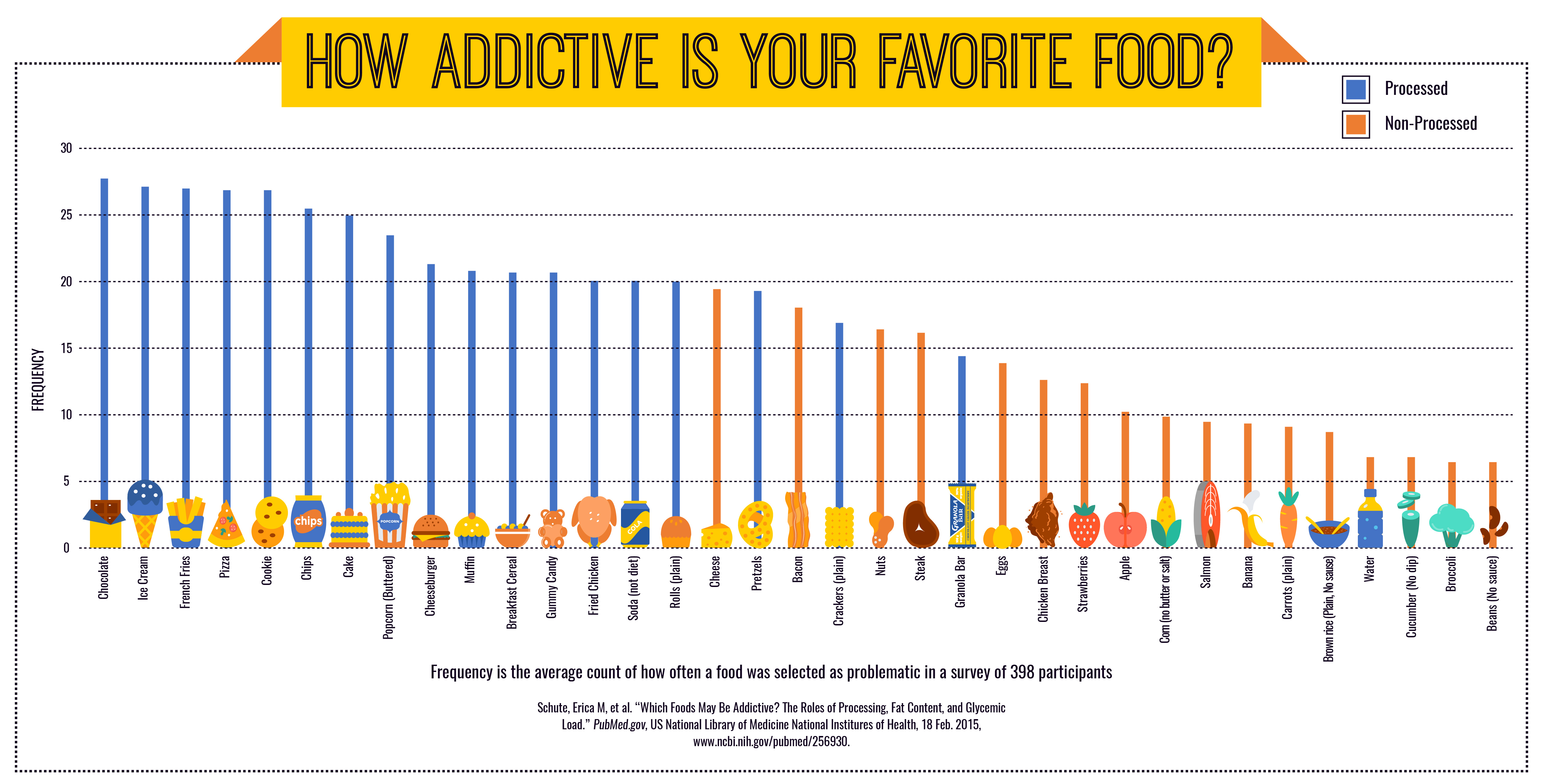You’ve probably wondered if your occasional pizza cravings and late-night ice cream binges are signs that you’re addicted to food.
But what if it’s that time of the month and your hormones are just going haywire? What if you just went “beast mode” at the gym and craving for more carbs is your body’s way of saying, “That new workout you just did was brutal. Feed me!”
In this visual case study, we take a more in-depth look at the science behind food addiction by reviewing available research on the subject. You will also learn about its characteristic symptoms, how it’s managed, and a couple of stories from people who experienced it first hand.
In the end, the body needs food for survival, making this type of addiction more complex than other forms of addiction (like alcohol and drugs).
Can you be addicted to food and not know it?
The idea of food addiction isn’t new. Popular media is quick to point out that it could be one of the reasons behind the rising obesity rates in developed countries. It’s worth noting, however, that food addiction remains a controversial topic amongst researchers. In fact, recent research reveals that an addiction to food isn’t necessarily associated with obesity.
The infographic below highlights two stories of food addiction.
At first glance, food addiction may seem like your usual eating disorders such as anorexia and bulimia. However, food addiction is more related to eating patterns, as well as the brains’ pleasure and reward pathways.
Meanwhile, people with eating disorders tend to have negative thoughts about their relationship with food and their bodies (body weight, shape, or overall body image).
The skinny on food addiction
Food addiction is defined as a clinically significant physical and psychological dependence on high fat, high sugar, and highly palatable foods. It involves the same areas of your brain and the same neurotransmitters as drug and alcohol addiction.
It’s worth noting that it’s not a recognized diagnosis for now. It is not classified as a disorder in the Diagnostic and Statistical Manual of Mental Disorders (DSM-5). However, food addiction shares many characteristics with diagnoses that are included in DSM-5, such as Binge Eating Disorder.
Even though not directly the same as substance addiction, clinical studies suggest that food and substance addiction have much in common, such as inexplicably strong cravings and patterns of compulsive use.
The Yale Food Addiction Scale (YFAS), which measures behavioral indicators of addictive eating and modeled after DSM-IV substance dependence criteria, is typically used to assess the degree of food addiction.
The main symptoms of food addiction are craving and binging on mostly unhealthy food items without being hungry plus an inability to resist the urge to overeat.
The infographic below shows the most common symptoms of food addiction. If you or someone you know can relate to 3 or more of the characteristic symptoms and demonstrate clinically significant impairment of distress within the past 12 months, consider the possibility of food addiction and seek professional help as soon as possible.

Can you guess which food groups are the most addictive?
The most problematic foods include typical junk food like candy, chips, fries, chocolate, cookies, white bread, pasta and ice cream. The information in the graph below is based on a survey of 398 participants.
Food can be just as addictive as drugs
In a study of 48 healthy young women, ranging from lean to obese, who were asked to look and consume a highly palatable food (chocolate milkshake) vs. a tasteless control solution, the researchers found out the following:
The women who demonstrated an addictive-like eating behavior appear to have greater activity in certain regions of the brain similar to substance dependence, including heightened anticipation upon seeing food.
Their brains also did not recognize satisfaction after trying to fulfill cravings. The study’s findings suggest that food addiction is not about the lack of willpower but rather brain chemistry imbalance.
How food addiction develops and ways to manage it
The infographic below highlights how food addiction is cut from the same cloth as substance addiction. The stages of food addiction and the different ways to manage it are also illustrated.

Over to you
Do you feel like you’re “addicted” to a certain food group? How do you handle it?
Do you agree with the research findings on food addiction or do you think a puzzle piece is missing? We’d love to hear your thoughts in the comments below.
By the way, you can use the infographics in this case study (as long as there’s proper attribution!) or let our design service team make one for you. We will be also be uploading the infographics in our template library so you can reuse it asap!


